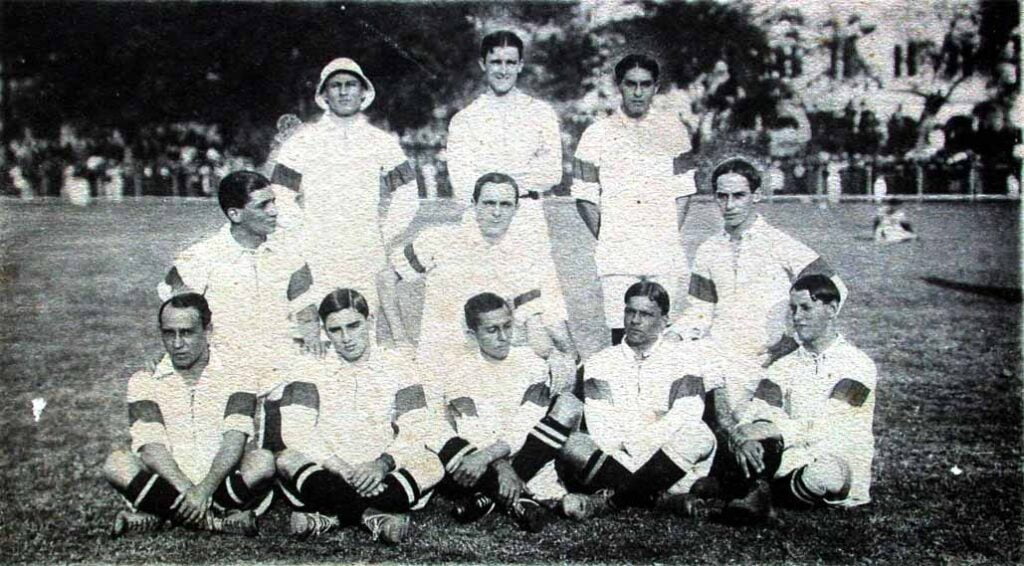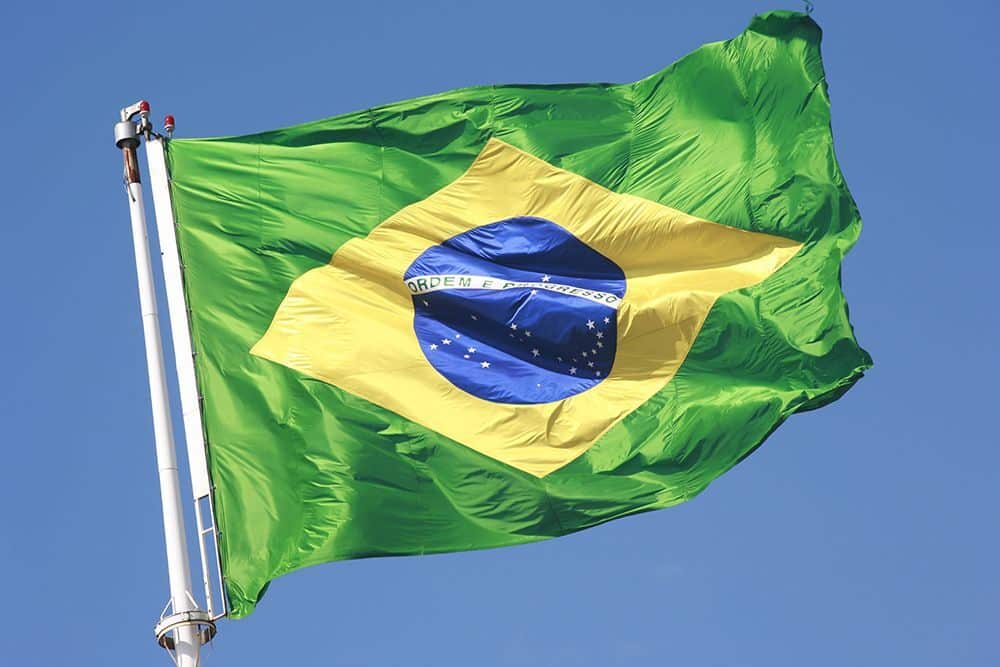The Brazil national football team, colloquially known as the “Seleção Canarinha” (Canary Squad) due to their iconic bright yellow jersey, is a symbol of footballing excellence. Representing Brazil in men’s international football, the team’s jersey has evolved over the years, reflecting the nation’s rich footballing history and culture.
Where to Order the Brazil Jersey in the US
For fans in the United States looking to don the iconic yellow and green, numerous online retailers and sports outlets offer authentic Brazil jerseys.
Nike
Dive into an extensive selection featuring scarves, hats, balls, tees, jackets, tank tops and more. Explore the official collection of Brazil jersey and gear at Nike.com.
Pelesoccer
For a diverse and elegant selection of Brazil jersey and more, Pelesoccer.com is a delightful destination to explore.
Fanatics.com
Fanatics offers more than just Brazil jerseys; it’s a treasure trove where you can purchase and even bid on signed memorabilia, including Neymar’s Panini card or Julio Cesar’s gloves.
WorldSoccerShop.com
At WorldSoccerShop.com, you can find Brazil jersey spotlighting renowned players like Neymar, Richarlison, Coutinho, Vinicius Junior, Fabinho, and Martinelli.
Early Times: The Inception of Brazil’s Football Legacy
Brazil’s football journey began with their inaugural game in 1914, believed to be against the English club, Exeter City. This match, played in Fluminense’s stadium, saw Brazil emerge victorious with a 2-0 win. The early jerseys worn by the players during this period were simplistic, reflecting the humble beginnings of what would become a footballing giant.

Per FootballKitArchive.com, the first Brazil jersey beautifully showcased a blend of blue and white colors.

Sponsors, World Cup Triumphs, and Iconic Jerseys
Brazil’s jerseys have been graced by various sponsors over the years. From the early days with brands like Ceppo and Athleta to the more recent partnerships with giants like Nike, the Brazil jersey has seen a blend of tradition and modernity. The World Cup, being the pinnacle of international football, has always been a special occasion for the release of new jerseys. Each Brazil World Cup jersey tells a story, capturing the essence of the time and the aspirations of the nation.
The Brazil jersey worn during their World Cup victories in 1958, 1962, 1970, 1994, and 2002 are especially iconic. Each of these jerseys tells a story of triumph, skill, and national pride.
Behind the Hues: The Story of Yellow, Green and Blue in the Brazilian jersey
In 1950, Brazil hosted the World Cup, the first since 1938. For their final game against Uruguay, Brazil only needed a draw to clinch the title.
A staggering 200,000 spectators — the largest attendance ever recorded for a football match — packed the Maracanã in Rio de Janeiro. However, the match concluded in a 2-1 defeat for Brazil. Uruguay scored a decisive goal just 11 minutes before the final whistle, securing their position as world champions.
This loss was a national catastrophe for Brazil, deeply shocking the nation. It went down in history as the infamous “Maracanazo.” To move past the memories of the Maracanazo for the 1954 World Cup, Brazil decided to replace the “unpatriotic” all-white kit.
A 19-year-old named Aldyr Schlee won a competition to design the new kit. He took inspiration from the national flag’s colors: yellow, green, blue, and white. And so the legendary Camisa Canarinho was born. But why is the Brazilian flag those colours? Well, this was the flag of the Empire of Brazil, established in 1822 when it declared independence from Portugal.
This new flag was designed to incorporate the dynastic colours of the Emperor and Empress of Brazil. Pedro I, the Emperor, was part of the House of Braganza. Their heraldic symbol was a green wyvern – a sort of dragon – to represent Saint George. Hence the green.While the yellow in the Brazilian imperial flag represented Maria Leopoldina of Austria, Pedro’s wife and the first Empress of Brazil. She was from the House of Habsburg and the daughter of the final Holy Roman Emperor – and her sister was Napoleon Bonaparte’s second wife.
The House of Habsburg was one of the oldest and most powerful in Europe, dating back to the 10th century. Their original heraldic colours were white and red, but once the Habsburgs started to dominate the Holy Roman Empire they adopted its colours: black and yellow (or gold).

And so the imperial flag combined the green of the Braganzas and the yellow of the Habsburgs. What about the blue, then? In 1889 Brazil overthew its monarchy and became a republic, and so the imperial coat of arms in the centre of the old flag had to be removed…
It was replaced by a blue circle filled with white stars, to represent the night sky over Rio de Janeiro on 15th November 1889, the day Brazil became a republic. Each star represents a federal unit of Brazil, with their size corresponding to the geographical size of the region.
And so a new flag for the Brazilian republic was born, with its old green and yellow colours slightly altered, and a new motto – Ordem e Progresso, meaning Order and Progress. These were the colours of Aldyr Schlee’s design for the 1954 World Cup.
Athleta Delivered the Legendary Brazil Jersey
Athleta, the esteemed maker of the iconic Brazil jersey, also crafted kits for illustrious Brazilian clubs like Flamengo, Juventude, Palmeiras, Portuguesa, Vasco de Gama, Botafogo, Santa Cruz, Cruzeiro, and Santos. Today, they continue to leave their mark, predominantly in the Japanese market.
Neymar and the Brazil Jersey
Modern legends like Neymar have also left their mark on the Brazil jersey. Neymar’s dynamic playstyle, combined with his personal flair, has made the jerseys he’s worn particularly popular among fans and collectors. He looked like a real poster boy in 2014 in his signature Neymar cleats at the world cup. If you are a true fan, don’t miss our Neymar jersey story!

Votings and the Best Brazil Jersey
Several polls and votings have been conducted over the years to determine the most popular Brazil jersey. While opinions vary, the jerseys from Brazil’s World Cup-winning years often rank high due to their historical significance and the memories they evoke.
Conclusion
The Brazil jersey is not just a piece of clothing, it’s a symbol of a nation’s love for football. It represents the heartbeats of millions who cheer for the “Seleção” every time they step onto the pitch. Whether you’re a die-hard fan or a casual observer, the allure of the Brazil jersey is undeniable.
The Enchanting Saga Behind the Stars on Brazil Jersey
It was 1958, a year that would forever change the trajectory of international football, marking the emergence of a team that would come to symbolize the beautiful game. Within this storied chapter lies the tale of Brazil jersey, not just a piece of fabric but a symbol of national pride and global excellence, adorned for the first time with the star that signifies supremacy in the world’s most beloved sport. This narrative is further enriched by the introduction of a young talent, Pelé, whose brilliance on the field would illuminate the path for future generations and cast a long shadow over the realms of football history.
Embark on a journey through the annals of football history, where the tale of Brazil’s remarkable fourth World Cup victory in 1994 in the United States is etched in the annals of time, a triumph that transcends the bounds of mere sport to become a legend. This victory not only showcased the unparalleled skill and passion of Brazilian football but also added a prestigious fourth star to the Brazil jersey, symbolizing their dominance in the world of football.
Dive deep into the epic tale of Brazil’s triumphant 2002 World Cup victory in South Korea and Japan, marking a monumental chapter in the annals of football history. This victory was not just another win; it was a masterclass in skill, perseverance, and the indomitable spirit of the Seleção, culminating in the addition of the illustrious fifth star to the Brazil jersey. This jersey, a symbol of footballing excellence and national pride, bore witness to the resurgence of Brazil as the undisputed sovereign of the football world.
The tournament unfolded as a showcase of brilliance, with the likes of Ronaldo, Rivaldo, Roberto Carlos, and Ronaldinho leading the charge. Ronaldo, with his unmatched prowess and lethal finishing, redefined the art of the striker, overcoming adversity to claim the Golden Boot. Roberto Carlos, with his thunderous shots and relentless energy, patrolled the left flank, blending defense with attack in seamless harmony. Ronaldinho, the magician, with his dazzling footwork and visionary play, orchestrated the midfield, leaving defenders and spectators alike in awe.
Together, these legends and their teammates crafted a narrative of redemption and glory, rebounding from previous disappointments to stand atop the world once more. The 2002 campaign was a symphony of footballing excellence, each match a verse in the poetic journey towards the ultimate accolade. The Brazil jersey, emblazoned with its fifth star, became a testament to this triumph, a reminder of the moment Brazil reclaimed its throne in the football kingdom.
As we recount the saga of Brazil’s fifth World Cup win, we pay homage to the heroes of 2002, whose legacy is forever immortalized in the stars of the Brazil jersey. Their story is a beacon of inspiration, a narrative of conquering the pinnacle of football, etched forever in the annals of the beautiful game.